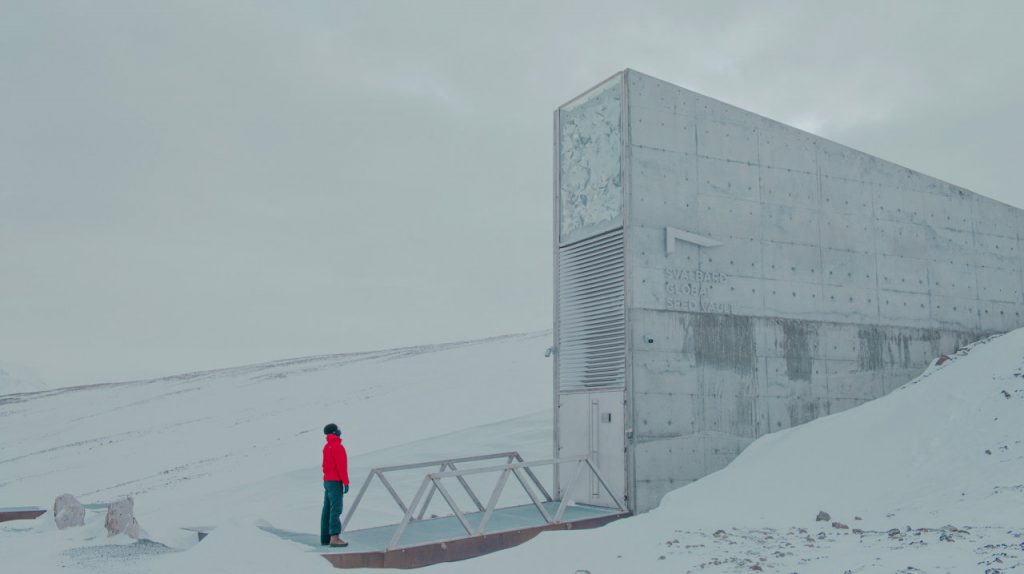Tibi Puiu of ZME Science recently presented a backup plan in case we screw up this planet for good: a “Lunar ark” that would store DNA from millions of species in Moon’s lava tubes.
The project, first described in a paper presented by researchers at the University of Arizona during the IEEE Aerospace Conference, proposes the storage of genetic material from millions of species below the moon’s surface in lava tubes. There, they would act as a ‘lunar ark’ that preserves Earth’s most cherished resource: the evolution of billions of years of life.
This project is similar to Norway’s “Doomsday” Seed Vault, which hosts more than 850,000 different seed samples in the frigid Arctic. Seeds are kept at -18 °C (-3 °F) and should be protected against a number of potential disasters, ranging from global warming to nuclear war.
Likewise, the lunar ark would deposit cryogenically frozen seeds, spores, sperm, and egg samples from millions of species of animals. In order to protect these precious samples, the ark would be stored inside one of the more than 200 lava tubes identified so far beneath the moon’s surface.
Lava Tubes
A lava tube, or pyroduct, is a natural conduit formed by flowing lava from a volcanic vent that moves beneath the hardened surface of a lava flow.
These yawning, subterranean caverns can have heights that dwarf Dubai’s Burj Khalifa. Untouched for the last billions of years, these lava tubes provide the perfect shelter from punishing solar radiation, which is why they’ve been identified as sites for future human bases.
But if we ever colonize the moon in a lava tube, why not take the extra step and build a genetic ark? Besides the ample space and radiation shielding, the temperature inside the lava tubes hovers around a constant -25° Celsius (-15° F), which is ideal for storing sensitive biological samples.
Earth also has lava tubes formed during its early years, but these are much smaller, about the size of subway tunnels, and have been eroded over time by earthquakes, plate tectonics, and other natural processes. The lunar caverns are much better suited to acting as a genetic vault.
The Lunar Ark

Artist impression of the proposed underground lunar ark. Credit: University of Arizona. Via ZME Science
Jekan Thanga, a professor of aerospace and mechanical engineering at the University of Arizona College of Engineering, explains:
Earth is naturally a volatile environment. As humans, we had a close call about 75,000 years ago with the Toba supervolcanic eruption, which caused a 1,000-year cooling period and, according to some, aligns with an estimated drop in human diversity. Because human civilization has such a large footprint, if it were to collapse, that could have a negative cascading effect on the rest of the planet.
Of course, building an ark on the moon is a huge undertaking. By Thanga’s calculations, it would take at least 250 rocket launches to carry about 50 samples from each of the 6.7 million species on Earth. For comparison, it took about 40 rocket launches to build the International Space Station.
These samples would be housed in an underground facility powered by solar panels positioned on the moon’s surface. Two or more elevator shafts would lead down to the facility where biological samples would be housed in various cryogenic preservation modules.
Inside the modules, the samples would float above metal surfaces thanks to a phenomenon known as quantum levitation. Maintenance would be ensured by robots navigating above magnetic tracks.
All of this may sound wack, but it definitely is in the realm of possibility — we already have the technology at our disposal after all. It’s just a matter of directing resources and gaining public support.
Just the other day, China and Russia announced that they have plans to build a lunar outpost together. Elsewhere, the US has plans for its own lunar base called Artemis after it lands astronauts back on the moon in 2024.
As I keep telling people, the future is here! And if any of this inspired you, happy writing 🙂







I’m ready for Mars–in another lifetime or two! It will be a LONG time before colonization there and a one-way trip at that, given the gravity differential. In the meantime; sure, why not a Lunar Ark. I WON’T be making the trip this lifetime either. I can still write about these topics though. 🙂
Same here lol